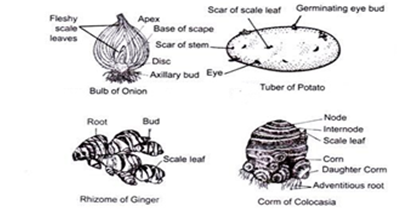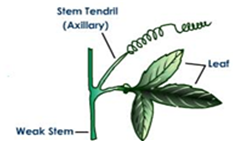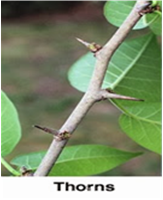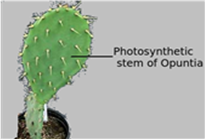Describe modifications of stem with suitable examples.
The stem may be modified for:
(a) Storage – Underground stems of plants like potato are modified into tubers which perform the function of storing food. Stem of plants like ginger are modified into rhizome while the stem of colocasia are modified into corm. All these stem modification perform the function of storing food.
(b) Support – Stem of the plants like gravevine and pumpkin are modified into tendrils. These tendrils are slender and spirally coil that help the plant to climb and provide support. 
(c) Protection – Stem of plants like Citrus and Bougainvillea are modified into thorns which protect the plants from the browsing animals.
(d) Photosynthesis – Plants like Opuntia have modified stems which are flattened, fleshy and contain chlorophyll that carries out photosynthesis. 
(e) Spread – Stem of plants like strawberry is modified into a Stolon that spreads to new niches. Plants like Pistia possess stem which is modified into Offset, which has a lateral branch with short internodes and each node bearing a tuft of rosette leaves. Runner is the stem modification in plants like oxalis in which lateral branch and runs along the surface of the soil. It develops distinct nodes and internodes. At each node, the runner produces roots below and leaves above. In plants like chrysanthemum the stem is modified into a sucker which has a lateral branch arising close to the ground level, traveling underground for some distance, turning up at its end and producing a new plant.
(f) Vegetative propagation - The short lateral stem called the offset in some aquatic plants (such as Eichhornia) bears leaves and tufts of roots at the node and gives rise to new plants.
